
 André Gauci
updated this on September 14, 2017
André Gauci
updated this on September 14, 2017
Finding and attracting high quality clients for your business should be one of your most important objectives.
Right up there with retaining existing clients and finding high quality employees.
In fact, when we started building Fusioo (easy online database software), our two primary objectives were to:
In this post, I'm going to share the various tactics we've used over the years to land high-quality clients.
Please note that this blog post is being continously updated, so by signing up to the newsletter, you will be getting exclusive access to new updates directly in your mailbox.
Note: To make navigation easier, you can click on the icon near each title to quickly jump from one section to another.
Redditors hate marketing.
This is what almost every marketer I've met thinks.
But the reality is somewhat different.
Redditors hate BS.. and self-promotion.. and reposts.
Yet, Reddit is an absolute goldmine when it comes to finding clients.
Why, you may ask?
Because subreddits group your ideal clients together, in one place.
So how do you attract redditors to your website?
You do so by using the Added Value Technique.
If you stick around on any subreddit, you'll soon realize that users are mostly asking the same questions.
So, a great way to understand what subreddit users commonly search for, and ask, is to use a Reddit keyword research tool, such as Keyworddit.
Now that you know what users are talking about, all you need to do is build content that answers their questions.
For example, by searching the Startups subreddit, you can start finding topics you might want to write about.
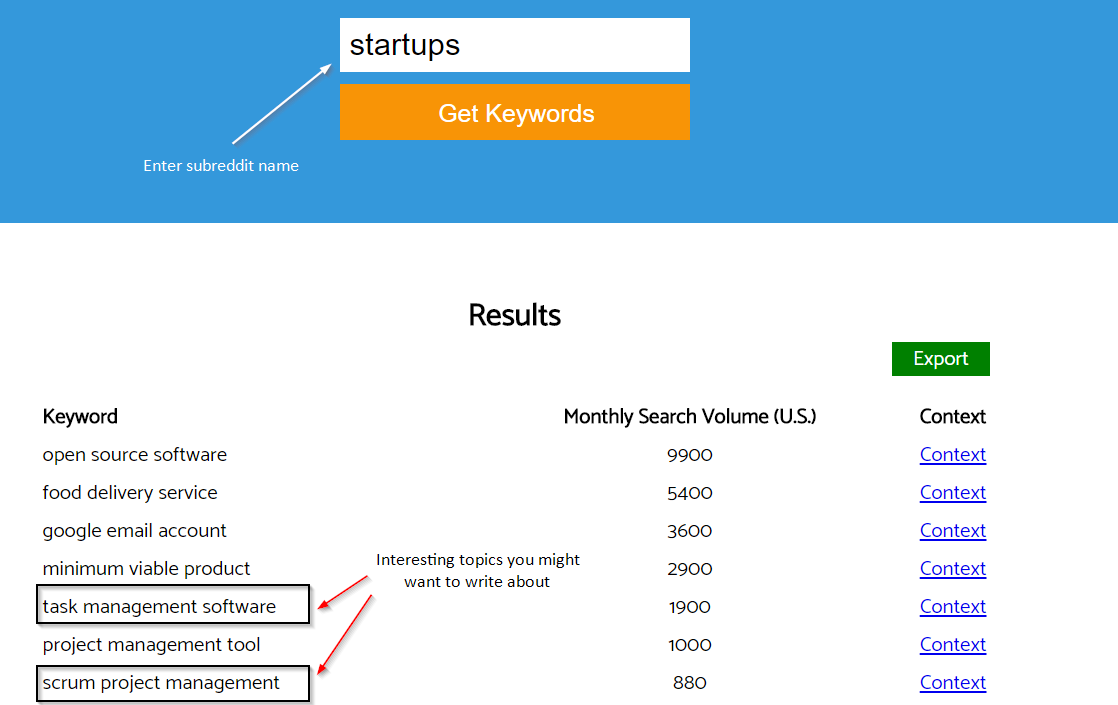
Based on these search results, you might want to, for example, write an article that clearly outlines how your company uses SCRUM.
Also, make sure that all of your content aligns to your overall SEO Strategy.
The next step is to monitor keyword mentions on that particular subreddit.
You can do so by using a tool like TrackReddit.
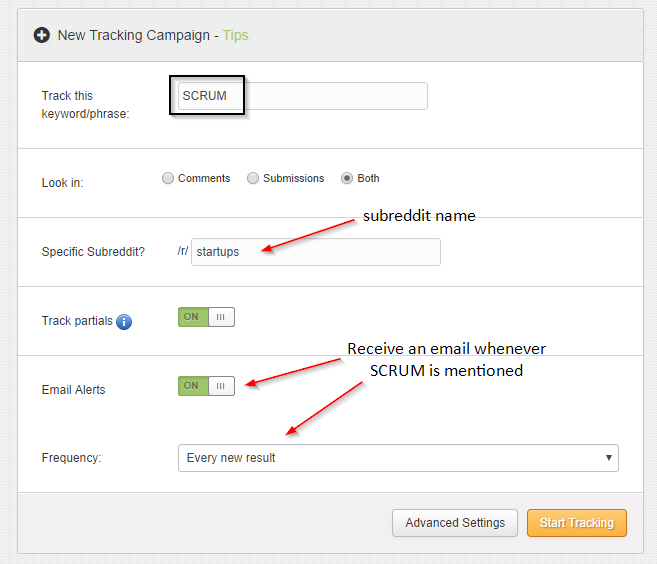
Now that you are getting alerted when your keywords are mention, your next goal is to act fast.
Leave a comment that uses an extract from your article.
Tell a story.
People tend to respond much better to stories, rather than advice.
When you're done, state that you have a guide, and that with their permission, you can send them your guide via private message.
If your answer is spot on, curiosity will get other people to ask you for your guide.
Once you get a lot of people asking for your guide, share a link in the comments section.
The Added Value Technique can also be applied across different channels.
For example, you can similarly apply this technique on niche social bookmarking sites, such as Inbound (Marketing audience) and HackerNews (Startups and Technology audience).
Objective
Get highly targeted traffic from Reddit
Action
Apply the Added Value Technique 10 times across 3 different subreddits, over a period of 2 months
"Quora is littered with spam. Most of the questions I saw on Quora where about dating, how to raise your kids and how to get rich."
This is what a friend of mine told me when I asked him to join the Quora community.
It's true, there might be some weird questions on Quora, like well.. everywhere else on the internet.
Yet, Quora is a great channel when it comes to getting highly targeted traffic to your website.
Look for topics where you can demonstrate relevant expertise.
The best way to find topics is through Quora's sitemap.

To get your answers in front of a larger user base, make sure you choose topics with a large number of followers.
The next step is to find questions with a lot of followers.

When answering a question, the question's followers are immediately notified on Quora.
Also, having a lot of eyeballs on your answer increases your chances of being upvoted.
This, in turn, makes your answer appear into various user feeds.
Your next job is to optimize your Quora profile to maximize traffic to your website/landing page.
Make sure to include a:
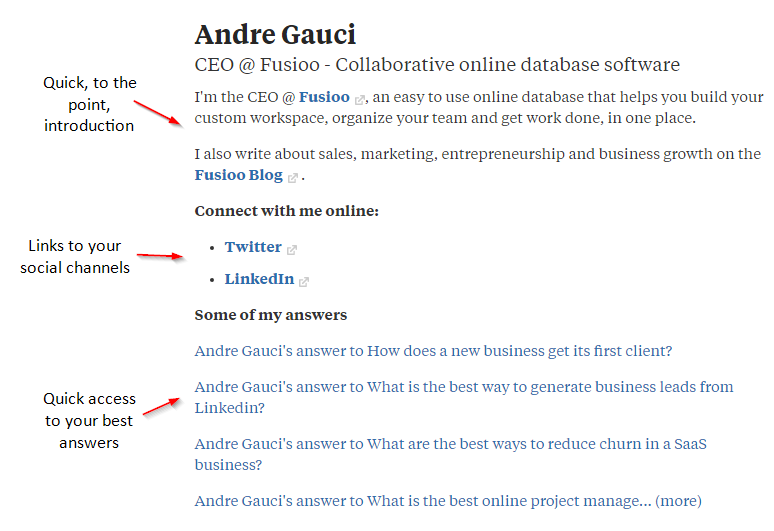
Objective
Get highly targeted traffic from Quora
Action
Answer 15 highly followed questions (10K+ followers) over a period of 2 weeks
Setting up an online community is a great way of building a highly engaged and highly targeted audience.
There is a plethora of platforms you could use to do just that, but here are just some examples to help you get creative.
There are 3 major benefits of building an online community.
Your first job when building an online community is to understand your competition.
Now that you have an idea of who you're competing with, your next goal is to find your niche.
This means that you'll need to figure out your ideal community individual.
Your goal is to talk to your potential audience.
Finally, you need to understand that building a community takes a long time and effort.
The best way to grow your community is to think about growth from the very start.
Does the community have the necessary hooks to help your members attract new community members?
Does it have the necessary incentives?
There are a lot of ways you could grow your online community, including:
Objective
Build a highly engaging Facebook group
Action
Get 300 daily active Facebook users over a period of 2 months
One of the best way to get highly converting referral traffic is to get your product or service mentioned by high quality blogs in your niche.
Blogs your customers love and respect.
Targeted blog traffic is great because it:
Your first goal is to research highly relevant blogs in your niche with an engaged audience. The best way to get started is to find out where your competitors are getting mentioned. Other methods you could use include:
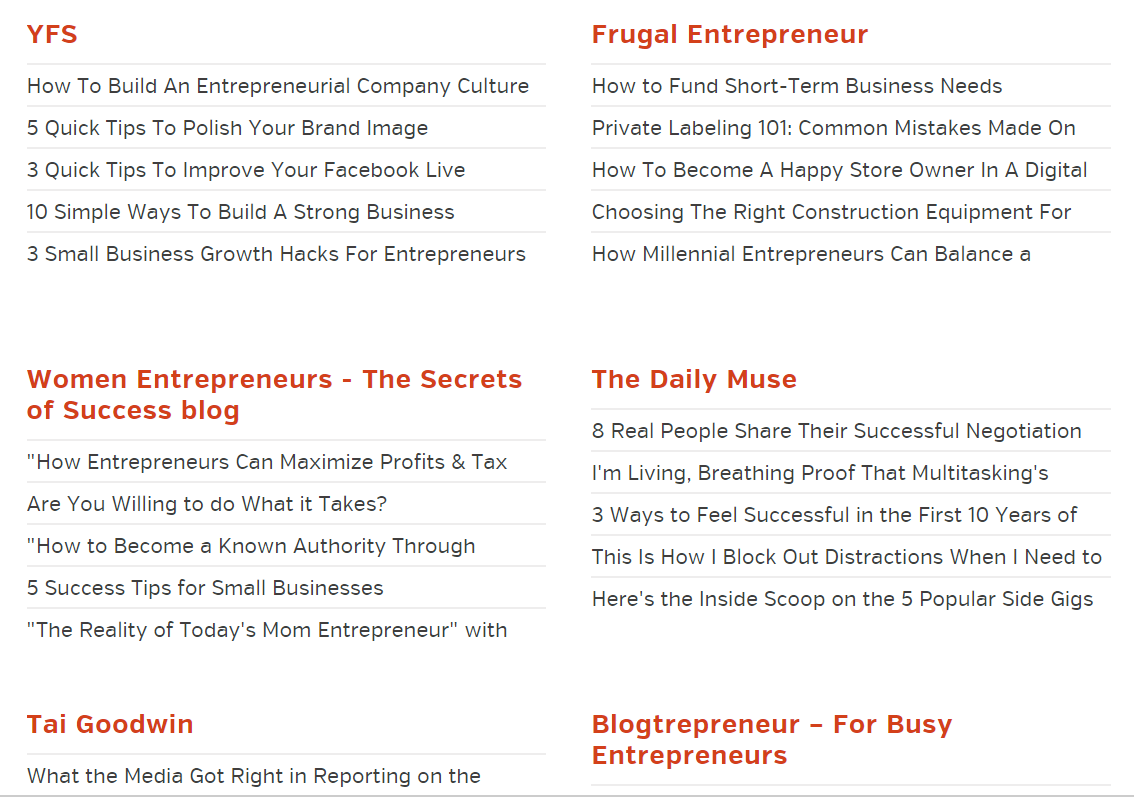
Now that you've compiled a list of potential targets, your next job is to let them know about your offering. In the smart emailing section, I've included some pitching tips you could use to improve your odds.
Objective
Get highly targeted traffic from niche relevant blogs
Action
Get your company mentioned on 5 blogs over a period of 3 weeks
SEO is dead.
No, "Buying a thousand links on Fiverr for $5" is dead.
As long as search engines exist and people still use them to find relevant information, search engine optimization will endure.
So, how do you get found on Google, Bing, Yahoo and DuckDuckGo?
What do you need and where do you get started?
First of all you need to understand that SEO is a long-term investment.
It is also a bit of a polarizing topic - there is literally an endless amount of resources online, mostly divulging contradicting information.
If you want to get in front of your potential clients, you need to understand what users are searching for.
When targeting keywords, the most important parameters to look for are:
There are many tools that could help you with keyword research.
Some of the most widely used options include:
So, how do you target your ideal keywords?
You do so by writing compelling, keyword-optimized content (blog posts, landing pages, resource pages, round ups and more).
Here's a great guide on how to do just that.
To optimize your content, you need to strategically use your target keywords in your page:
Also, make sure to include Latent Semantic Indexing (LSI) Keywords in your content.
LSI Keywords helps search engines understand context. So, if you're talking about Apple (the brand), you might want to include keywords that are connected to that brand, like "Apple Watch".
To find LSI keywords, use the "Related Searches" feature on Google:
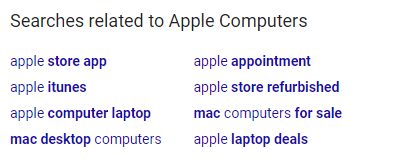
The next step is to set up your link building strategy.
When setting up your strategy, make sure you avoid the common pitfalls - such as buying or building spammy links.
You need to understand the Google Webmaster Guidelines and more specifically, the repercussions of having your website flagged by the Google Penguin algorithm.
As for building links, the best way to get started is to reverse engineer your competitors link building strategy.
To get started, you'll need to use a backlink checker tool, such as Ahrefs or Serpstat.
Finally, you'll need to track your progress.
Are you ranking for your target keywords?
Are there any other keywords you might optimize for?
Who is linking to your content?
To answer these questions, you will need to get familiar with Google Search Console.
Objective
Get highly targeted search engine traffic
Action
Create 3 landing pages targeting high-traffic, low competition long tail keywords. Craft a link building strategy based on your exact needs. Monitor your progress using Google Search Console and Google Analytics.
In recent years, "content is king" has become sort of a cliché.
If you ask any marketer out there, they'll tell you that content should be central to your marketing campaign.
And they are right.
When executed properly, building and distributing high quality content can pay huge dividends.
So, what are the benefits of building high quality content?
Your first job is to map out what your audience wants.
For example, most of our clients and existing blog followers are digital agencies, startups and entrepreneurs.
They don't care about database, CRM and project management software.
They care about how they are going to improve their cash flow, get more productive and grow their business.
And that's exactly what we're writing about.
By understanding what they want, we're creating content that solves their needs.
So to get started, search on Quora and Reddit what your audience cares about.
That's the kind of content you need to build.
Your next step is to set up your content strategy.
Which type of content resonates with your audience?
Here's a quick list to get you started:
Now that you know what content you need to build, your next goal is to find ways on how to distribute your content and get as many eyeballs as possible.
Here's a quick list to get you started:
Objective
Build a highly engaged audience
Action
Build 1 blog post a week over a period of 2 months
Have you ever used an online calculator to calculate your net salary?
Or maybe use an online website grader, that scores your website and lists a number of possible improvements.
These two are perfect examples of how you can use your engineering talent to attract and close leads.
It also helps with:
Before building your online tool, build an audience.
You can do by using your existing distribution channels, such as, for example, your blog.
Now that you've got a solid list (your blog audience + your existing customers), your next job is to leverage their collective knowledge.
What questions are they asking?
How can you empower your audience?
For example, if you're offering web development services and you've built an audience of non-techies, they might need to solve problems like:
You can build a tool that answers these exact questions.
Finally, your goal is to promote your tool.
And, because you've already built an audience, you can do so by leveraging their network.
Make the tool easily shareable and add incentives for those who share it.
Objective
Build a list of potential customers
Action
Build a simple, free tool and share it on Reddit. Use Google Analytics to measure conversions to your website. Test, rinse and repeat.
Being controversial pays dividends.
People like linking to and sharing opinions that affirm their controversial views.
It can help with your SEO efforts, propel your answers on Q&A sites and kickstart heated discussions on your blog content (resulting in more traffic).
Also, being both controversial and genuine can help you amass a cult following.
Just look at Gordon Ramsay and Gary Vaynerchuk.
If you're answering questions on Q&A sites or building content, just check out what the vast majority thinks about that particular topic.
Your next job is to share an opposing view that has a non-vocal minority.

Objective
Express highly controversial opinions on Quora, without getting banned
Action
Answer 30 questions with highly controversial, opposing views, over a period of 2 months
Chances are that people online are speaking about your product or service.
They might be comparing you to one of your competitors.
Or maybe telling other users (read: potential clients) how bad your offering is.
Now, what if you could turn those mentions into opportunities?
The truth is that caring about your customers can make all the difference in a very noisy world.
Helping potential customers out and letting them know how they can solve their problem is a great way to let people know that you care.
There are a lot of tools you could use to monitor brand mentions.
Two such tools are Mention and Google Alerts.
If you're using Slack or HipChat, you might also want to check out Notify.ly.
The next job is to turn your online mentions into opportunities.
Smart emailing, when executed properly, can unleash a new world of opportunities.
In fact, it is one of the most solid, tried and tested sources for new clients at Fusioo.
So, what exactly is smart emailing and is it legal?
Smart emailing is the act of researching, contacting and warming up your relationship prior to sending business related emails.
If you're not sure whether it's legal or not for your particular use case, make sure to check out this guide.
The benefits of smart emailing include:
Smart emailing is all about researching and targeting the right prospects.
Your #1 goal is to clearly define your ideal customer.
Ask yourself, which customers would be the best fit for my product or service?
Now that you've created a list of ideal prospects, your next job is to
pitch them your product help them solve their problems.
When pitching, make sure you:
Your target clients are already hanging out somewhere online.
Your job is to, well, find out where they are hanging out.
In a nutshell, niche communities are online channels where people hang out to build relationships and strengthen their subject knowledge.
There are many forms of niche communities, but in my opinion, the best ones are usually small, profile based and spam free.
Niche communities come in many shapes and forms.
What I found is that contributing to profile based communities helps with building better rapport.
So, slack communities or other profile based networks (such as Inbound) are much better at building rapport then nickname based/anonymous communities, such as Reddit or IRC channels.
To find slack communities related to your niche, you can check out the following directories:
The next step is to contribute to ongoing discussions.
Don't bother about ROI at first.
Just focus on sharing your knowledge and helping people out.
Trying to blatantly sell your product or service will not only annoy other members but will also potentially get you banned.
Objective
Build high-value relationships on niche Slack communities
Action
Join realtime conversations across 3 different Slack communities, over a period of 3 months.
Affiliate programs are not for everyone.
An affiliate program is an agreement where an affiliate business sends traffic to your business, for a specified fee.
The agreement will specify how and when your affiliate is paid.
For example, you might pay your affiliates for a set amount of traffic or when someone has purchased something from your website.
When properly executed, affiliate programs can be an incredible way to scale your company without scaling marketing or business development resources.
In fact, big companies like Amazon and Netflix are constantly using affiliate programs to grow their revenue.
Objective
Get highly targeted traffic from affiliates
Action
Get 3 affiliates and 10 clients per affiliate, over a period of 2 months